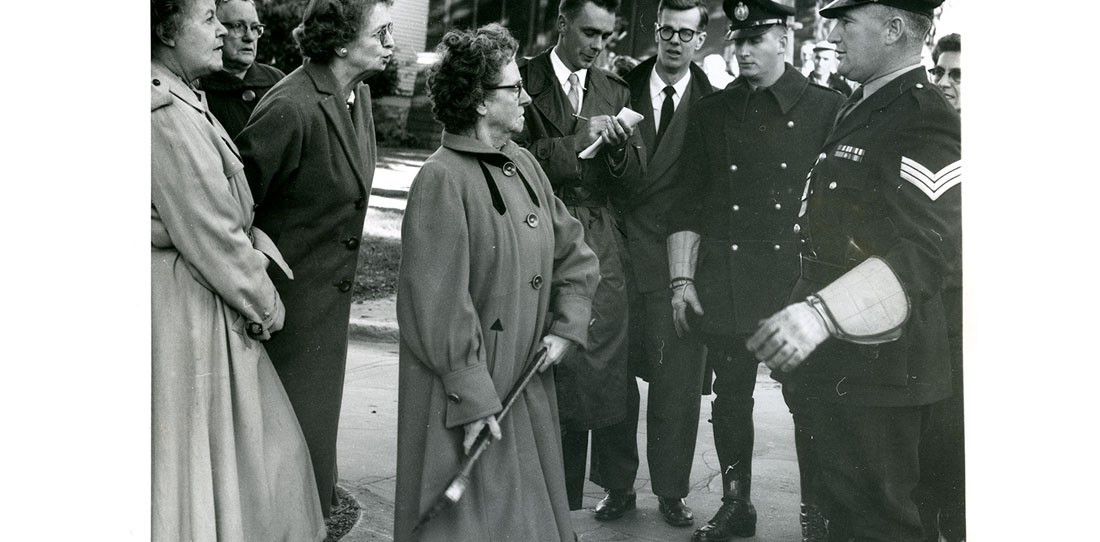City roots
The tragic tale of the Wolseley Elm
Trees are often caught up in human politics and drama on all scales. Every once in a while, these politics centre around a single tree. Such was the case of the Wolseley Elm.
On Sept. 19, 1957, the Winnipeg Free Press reported that 12 Wolseley women managed to stop city workers from cutting down a beloved neighbourhood elm through an impassioned protest, creating a human shield and shouting their objections. One elderly woman was particularly menacing, holding an axe while she glared at officials.
The tree was slated for removal because it stood in the middle of Wolseley Avenue at the end of Basswood Place, making it a driving hazard. The women’s defence of the old elm moved the mayor to stop the felling of the tree.
This tree was significant to these women for many reasons. The beautiful elm had stood in that spot for over 90 years, and it featured in many people’s fond memories. It also slowed traffic along the street, making the neighbourhood safer. And, for a few, it had become something of a war memorial, representing the boys who had played under its branches before going to war and never coming home.
Some Winnipeggers complained in the Winnipeg Tribune that not everyone could have a tree growing in the middle of their streets to slow traffic. They argued that if this was something these women were genuinely concerned about, they should put their energy toward lowering speed limits in residential areas instead of rescuing an old tree.
Others expressed their displeasure in much more violent ways. Following the women’s successful defence of the elm, it was set on fire multiple times, and its bark was stripped. It is also suspected by many that someone tried to blow up the tree with dynamite in October of 1958, although police never confirmed this.
While various city departments kept passing off responsibility for the tree, Wolseley residents and local tree experts worked time and again to save it. They provided grafts for stripped bark, ensured it was well-watered while it recovered and petitioned for a fence to protect it. Finally, when vandals ripped off all but one graft, the tree died in 1960.
I felt immensely sad for this elm as I researched its story. It was simply doing what it had always done: taking in nutrients, spreading its canopy wide and growing tall. The attention that was garnered from its defence unfortunately brought violence and what seems to be a slow death.
The Wolseley Elm continues to figure centrally in the neighbourhood’s cultural memory. It has been commemorated with everything from business names and social media accounts to plaques about the tree and the women who defended it. But most of the public tributes I have seen sidestep of the violence in this story.
I am glad that the “Wild Women” (as one newspaper called them) and the elm are remembered. But part of me feels we should also remember the targeted violence that was inflicted against the beloved tree. This kind of behaviour is not unfamiliar to us today. Perhaps if we work to understand where it stems from, we can be better equipped to challenge it in the future.
Kathryn Boschmann is a doctoral student in the history department at Concordia University whose research focuses on the relationship between religious communities and Indigenous activism in Winnipeg. She was born and raised in Manitoba and has made Winnipeg her home.
Published in Volume 74, Number 16 of The Uniter (January 30, 2020)








